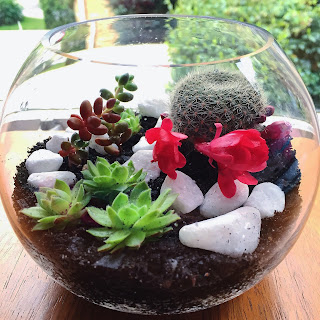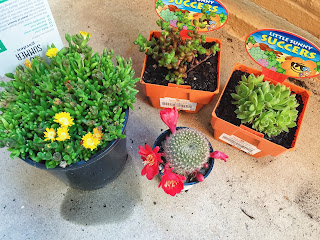Hello! How are you going?
Yes, it’s been a hot minute since I last posted anything.
Two years, a wedding, two cafes and a coffee roastery later, here I am! And I'm in my 12th year working for the same accounting firm!
Now that things have sort of settled down and I can breathe a little better, I thought I should start recording recipe videos again.
So today's recipe is Tahu Isi (Indonesian Stuffed Tofu), which is a popular street food snack. It's tofu puffs filled with minced chicken and veggies, then battered and deep fried. Because i make these for my dear family and friends, i added chopped prawns in the filling as well. I also am generous when filling the tofu :) Tahu isi is normally eaten with cabe rawit or bird'es eye chillies. Nom!
My four-year old niece loooooooooves tahu isi. The batter will get super crispy again when you air fry them. Miss O would devour these in minutes, without the chillies of course :)
Please note that i made three batches of the recipe below in the video.
Ingredients:
- Fried Tofu Puffs 200 gr - about 9-10 puffs
- Oil for deep frying
Fillings:
- 65 gr or 1 Small Size Carrot, coarsely grated
- 70 gr Cabbage, finely shredded
- 18 gr or 1 Medium Stalk Spring Onion, finely chopped
- 55 gr Bean Sprouts
- 30 gr Prawns, finely chopped
- 110 gr Minced Chicken
- 45 gr or approx. 2 Eschallots, finely chopped
- 8 gr or 1/2 Tbsp Oyster Sauce
- 12 gr or 2 Tbsp Fish Sauce
- 1/4 tsp white pepper
- 1/4 tsp black pepper
- 1/4 Tbsp white sugar
- 1 Tbsp Oil
Ground Spice (Bumbu Putih)*:
Please note you will need 3/4 of the ground spice for the filling and the remaining 1/4 for the batter
- 18 gr or approx. 3 Medium Cloves Garlic
- 60 gr or approx. 3 Medium Eschallots
- 10 gr or approx. 3 Candle Nuts
- 1 Tbsp Oil
* I make a big batch of these and keep it in the fridge, which makes it easier when i need to cook anything. It gives an extra oomph of flavour to my dishes.
Batter:
- 30 gr Plain Flour
- 25 gr Corn Flour
- 25 gr Rice Flour
- 65 gr Egg White
- 1 gr or 1/2 tsp Turmeric Powder
- 2 gr or 1/2 tsp Baking Powder
- 1/2 tsp White Pepper
- 95 gr Cold Water
Methods:
- Grind the spices in the food processor. In a heated pan, add 1 tablespoon of oil and add the ground spice. Stir fry until browned and fragrant.
- To make the filling, in a heated pan over medium-high heat, add 1 tablespoon of oil and the finely chopped eschallots, and stir fry for about 2 minutes until fragrant. Add the spring onion and stir to combine. Then add 3/4 of the ground spices from step one and stir fry for another 30 seconds. Add the minced chicken and keep stirring to break up the lumps. When the chicken has changed colour, add the chopped prawns and cook until the prawns start to change colour. Add the cabbage and cook for 1 minute. Add the carrots and cook for another minute. Add bean sprouts and cook fro 30 seconds. Then add the oyster sauce, fish sauce, pepper, sugar. Mix well to combine. Taste and adjust for seasoning. Turn off the heat and let the filling cool.
- In the meantime, prepare the tofu puffs. Cut a slit into each tofu puff and scoop out the centre. Mix the tofu excess into the filling.
- Using your clean hands, stuff each tofu puff with the fillings and set aside.
- Prepare your batter by mixing all of the ingredients and the remaining ground spice from step one. Mix until there are no lumps in the batter.
- Heat up your oil to 170C. Dip each stuffed tofu into the batter and deep fry in batches for about 4 mins on each side or until golden brown and crispy. Drain on paper towel and serve with cabe rawit or bird's eye chillies.














